Most websites fail to grow because they compete for keywords they can’t realistically rank for.
Over 90% of pages get no Google traffic at all, often because they target terms already dominated by high-authority sites.
The solution is simple.
Find low-competition keywords with enough search volume to bring consistent, targeted traffic. These keywords are easier to rank for, require fewer backlinks, and still attract people actively searching for your topic.
In this guide, I’ll walk you through the exact process to find low-competition keywords that deliver high traffic and conversions.
What Are Low-Competition Keywords?
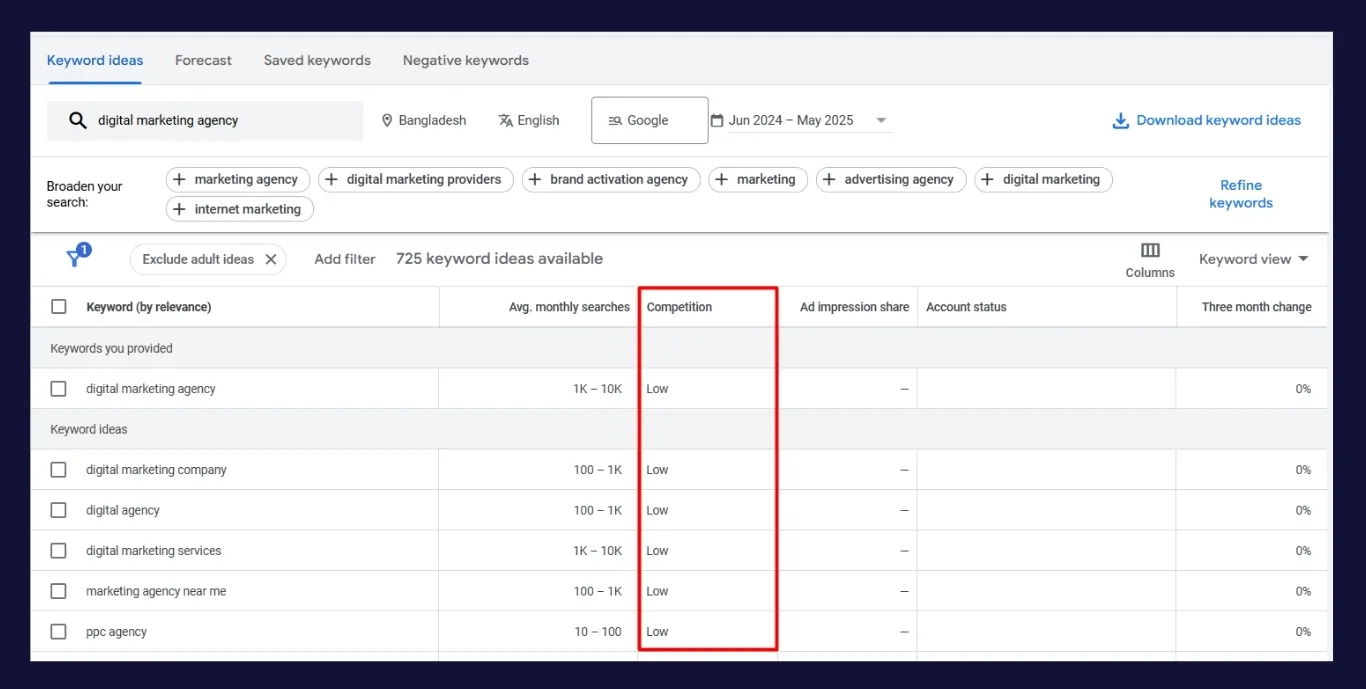
Low-competition keywords are search terms that fewer websites actively compete to rank for, making it easier for smaller or newer sites to reach page one.
They typically have:
- Moderate to high search volume—people are genuinely looking for them.
- Lower keyword difficulty (KD) scores in tools like Ahrefs, SEMrush, or Ubersuggest.
- Less optimized competition—such as forum posts, outdated blogs, or low-backlink pages ranking high.
These keywords are often long-tail (3+ words) or question-based queries, for example:
- “Best running shoes for flat feet women”
- “How to start a podcast on Spotify for free”
Because they address specific user needs, they match search intent better and are easier to win.
Why Are Low-Competition Keywords Important?
If your site is new or has few backlinks, ranking for competitive keywords is nearly impossible. Low-competition terms:
- Help you rank faster (weeks or months instead of years)
- Build topical authority so you can target tougher keywords later
- Attract intent-driven visitors who are more likely to engage or buy
- Offer long-term stability since niche keywords rarely face sudden competition spikes
For example, instead of targeting “digital marketing,” try “digital marketing tips for local restaurants” to capture a highly relevant audience with less effort.
Step-by-Step Process to Find Low-Competition Keywords with High Traffic
The keyword research process involves building, expanding, filtering, and validating your keyword ideas with a balance of volume and difficulty in mind. Below is a systematic approach that uses both manual techniques and keyword research tools to discover real opportunities.
Step 1: Start with Seed Keywords
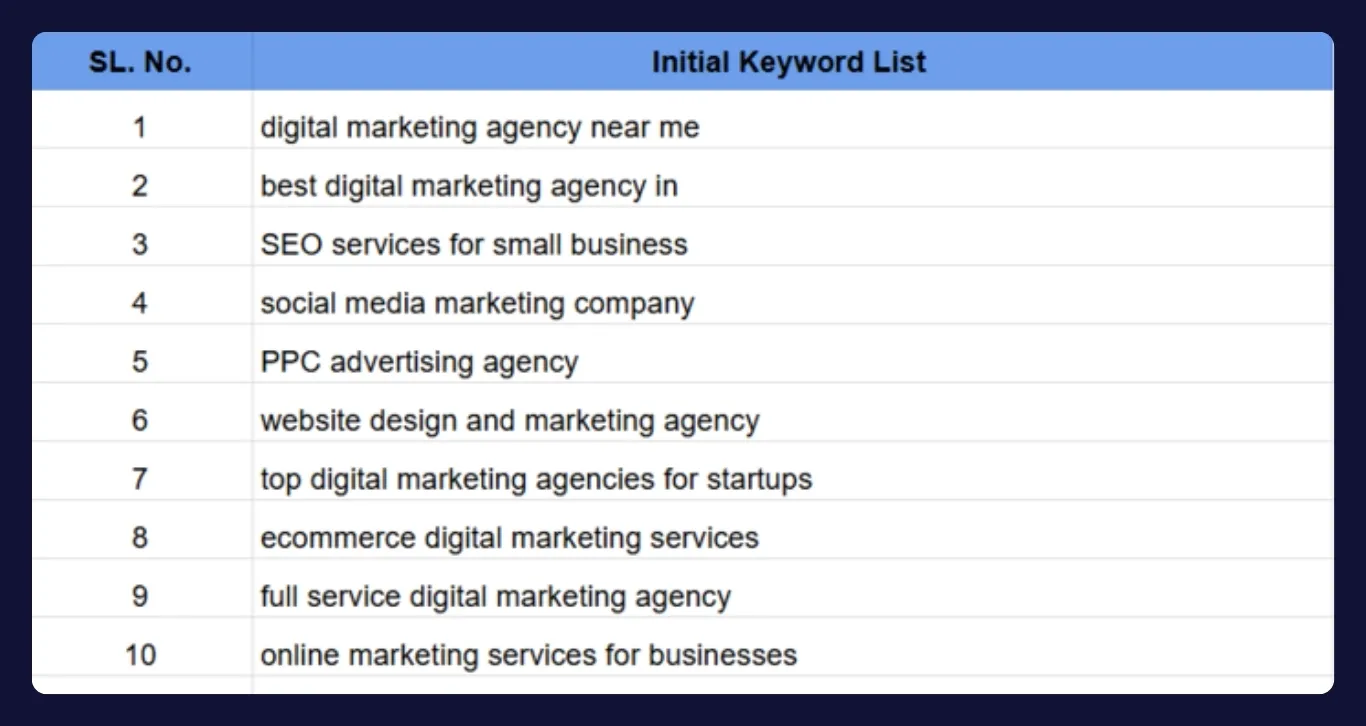
Identify a small set of basic keywords tied to your niche as your foundation.
Example (fitness for beginners):
- beginner workouts
- easy home fitness routines
- weight loss for new moms
How to find seed keywords:
- Use Google Autocomplete and note suggestions.
- Check Related Searches at the bottom of Google results.
- Explore Reddit, Quora, niche forums, and YouTube comments for real questions and terms.
Step 2: Expand Keyword List with Research Tools
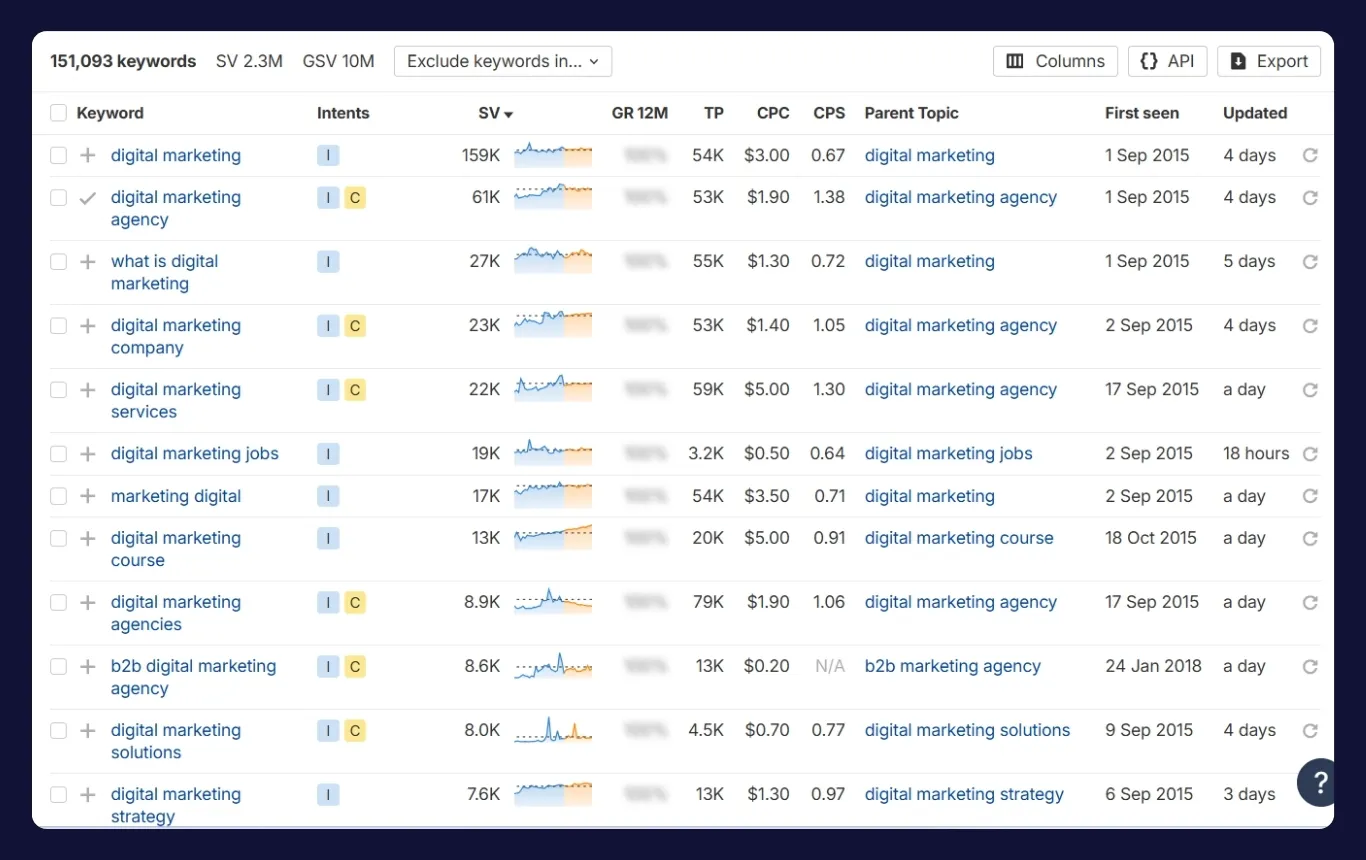
Use tools like Ahrefs, SEMrush, Ubersuggest, or KeywordTool.io to grow your list.
Process:
- Enter seed keywords.
- Filter for low KD scores (e.g., under 30 in Ahrefs) and monthly search volume over 500.
- Explore “Questions” and “Phrase Match” sections for long-tail options.
- Use Google Search Console to optimize keywords where you rank between positions 10–30 for quick wins.
Pro Tip:
Look for keyword clusters that revolve around the same intent to create comprehensive, authoritative content hubs.
Step 3: Manually Confirm True Low-Competition Keywords
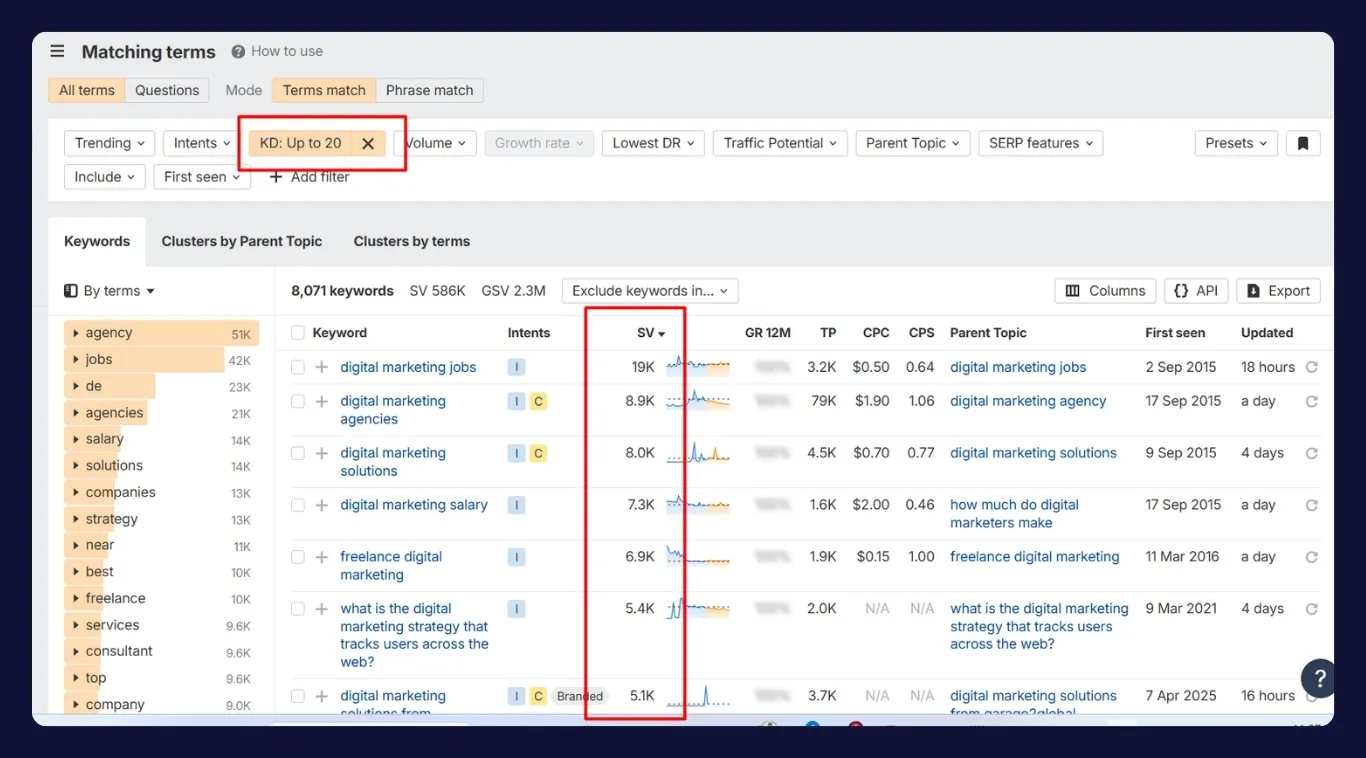
Not all low KD scores mean easy wins. Check the SERP yourself to confirm.
What to look for:
- Top results with forum threads or Q&A sites (Reddit, Quora)
- Outdated or thin content ranking high
- Low domain authority websites
- Pages with few or no backlinks
For example, if a 2018 blog post without visuals ranks #2, that’s your opportunity to rank higher with fresh, detailed content.
Step 4: Align with Search Intent
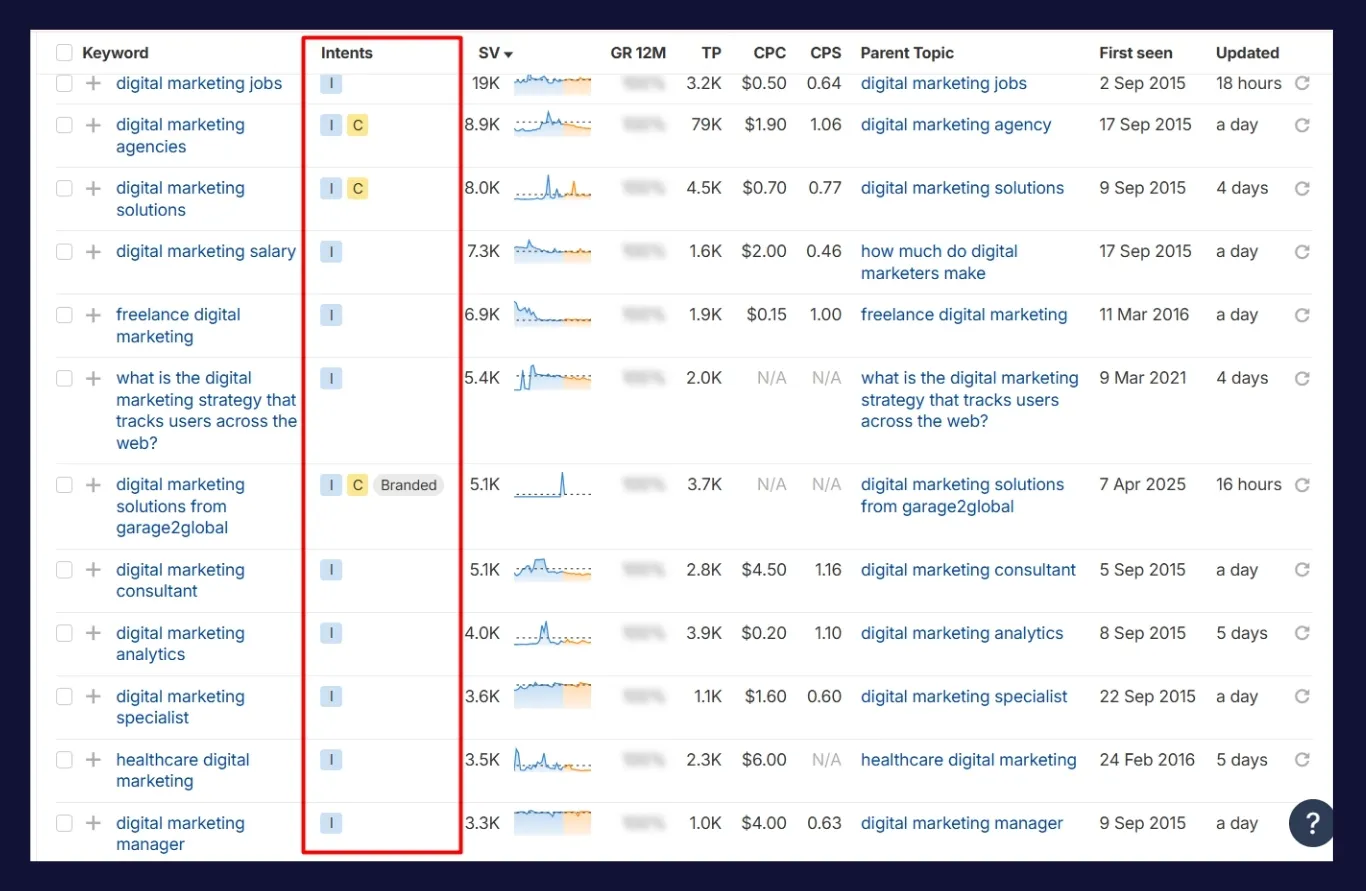
Understand the reason behind the search query.
Types of intent:
- Informational: Learning something (“how to fix a leaking tap”)
- Navigational: Finding a specific site (“Ahrefs blog”)
- Transactional: Ready to buy (“buy iPhone 14 online”)
- Commercial Investigation: Researching before buying (“best DSLR camera under $1000”)
How to match intent:
- Analyze the format of existing top results.
- Create similar content types (guides, product pages, reviews).
- Use “People Also Ask” for related questions to enhance your article.
Step 5: Contextual Keyword Difficulty Assessment
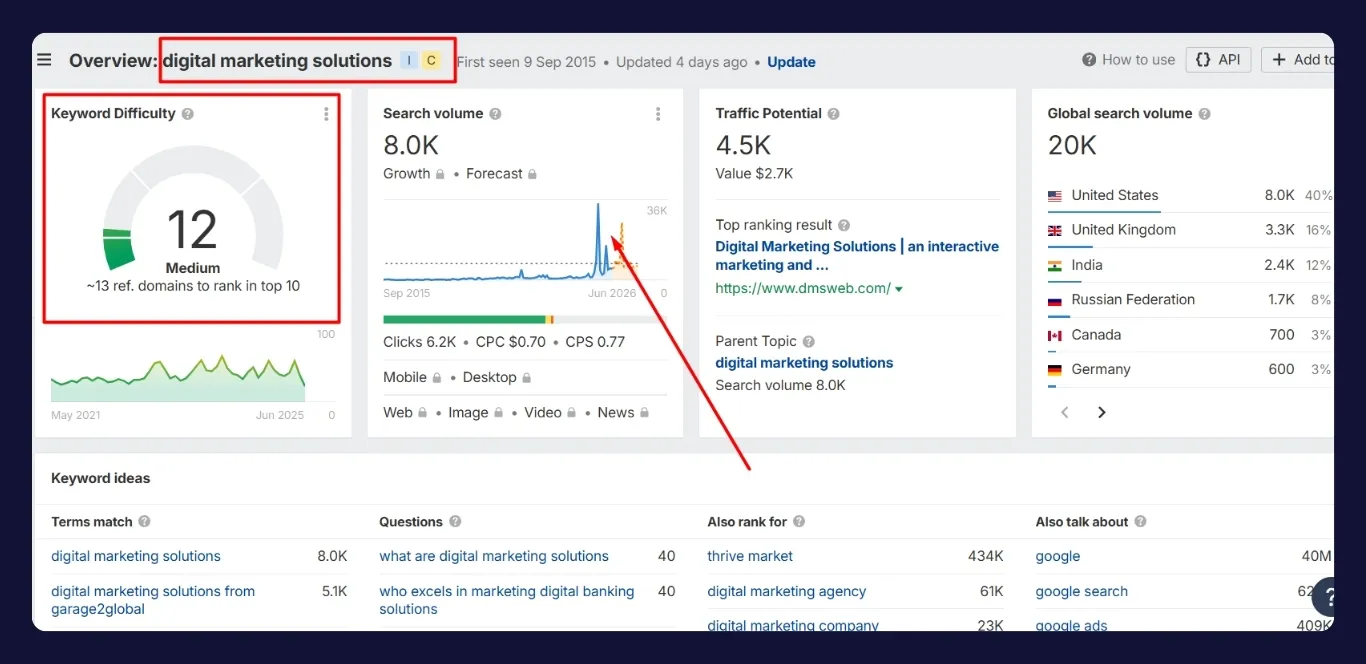
KD tools are starting points, not definitive measures.
Evaluate:
- Backlink profiles of top pages (use Ahrefs Toolbar, MozBar)
- Depth and quality of existing content
- Page organization (headings, images, user experience)
- Whether the ranking sites are authoritative brands or smaller blogs
If gaps exist (missing subtopics, outdated info), you can outrank even moderately competitive terms.
Advanced Strategies for Finding Low-Competition Keywords
1. Content Gap Analysis
- Use tools like Ahrefs’ “Content Gap” to find keywords competitors rank for but you don’t.
- Target low KD, good volume terms for quick wins.

2. Geo-Specific Keywords
- Add local terms to focus competition.
- Example: “digital marketing agency in new york”
- Often lower competition with better conversion potential.

3. Long-Tail & Question-Based Keywords
- Use tools like AnswerThePublic or AlsoAsked to find specific, intent-driven queries.
- Examples: “How to start a digital marketing agency” or “how to choose digital marketing agency.”

How to Target Low-Competition Keywords Effectively
After identifying low-competition keywords, the next step is to target them with high-quality content that satisfies both user intent and search engine expectations. Execution is critical the right keyword alone won’t rank unless paired with a strategic content plan.
1. Optimize for Relevance and Authority
- Include main keywords naturally in title, H1, URL, meta description.
- Use semantic keywords and related terms throughout.
- Go beyond basic answers by adding examples, visuals, and data.
- Cover subtopics to make your content the most complete resource.
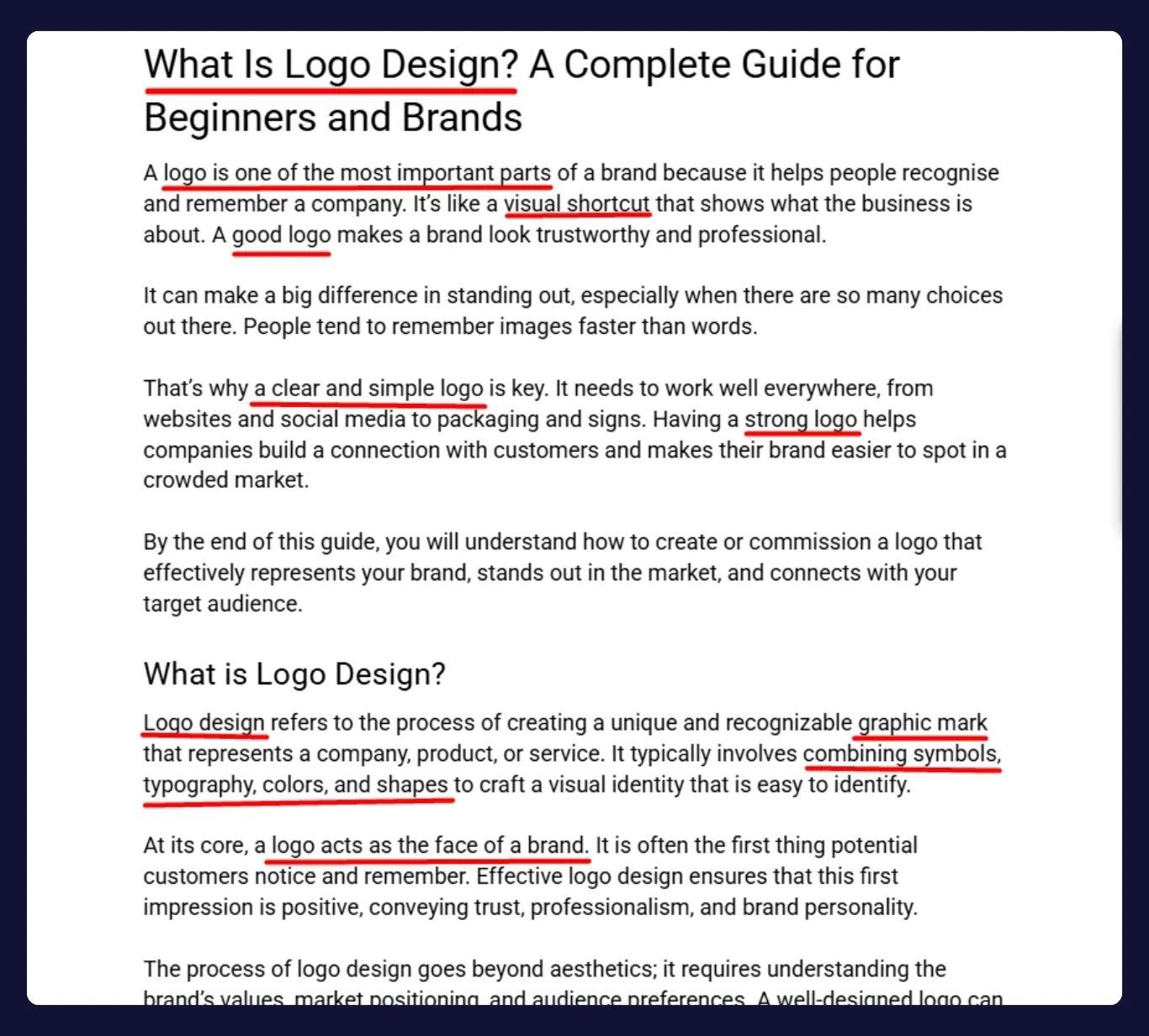
2. Use Internal Linking to Boost SEO
- Link new content to related articles.
- Use descriptive anchor texts (e.g., “Build a brand identity”).
- Build topic silos grouping related posts to strengthen authority.

3. Build Keyword Clusters
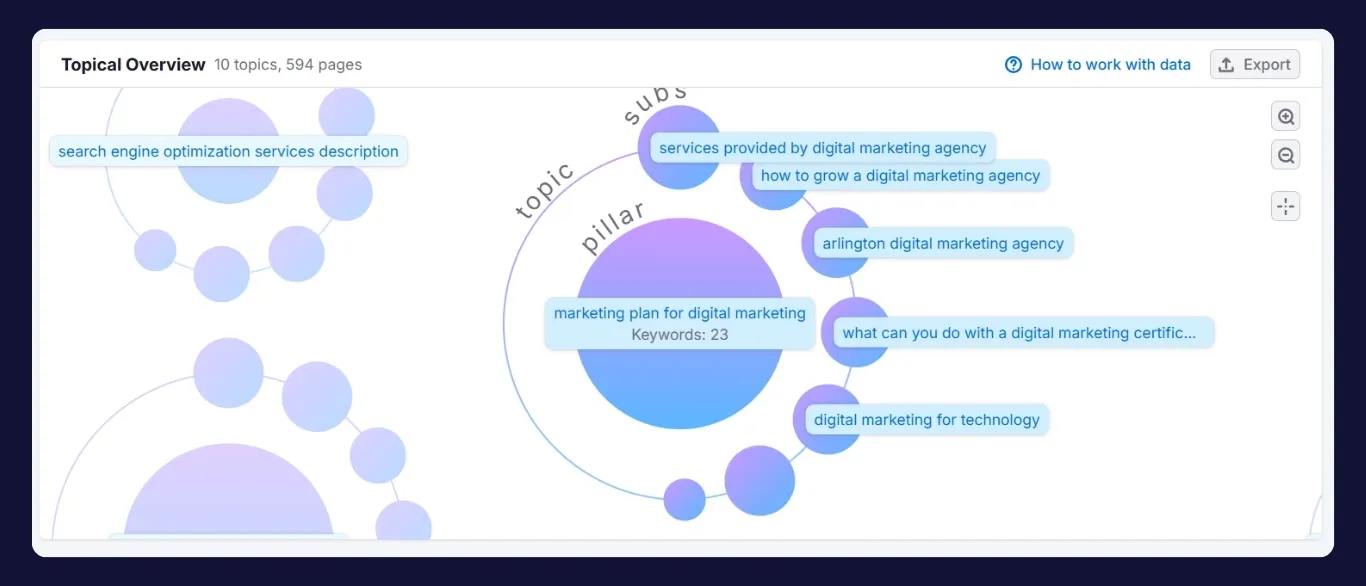
- Create comprehensive groups of connected articles centered around a main topic.
- Example cluster: “Low-Competition Keywords”
- Main article: How to Find Low-Competition Keywords with High Traffic
- Supporting articles: Tools for Finding Low-Competition Keywords | Long-Tail vs Short-Tail Keywords | Keyword Clustering Techniques
Should You Avoid High-Competition Keywords?

Not necessarily, just focus on them later once you’ve built traffic and authority from easier keywords.
Support big competitive terms with smaller keyword clusters first, employing predictive topical authority to build trust with Google before attempting harder ranks.
Action Plan to Get Started
- Brainstorm seed keywords.
- Expand with research tools and filter for low KD and decent volume.
- Manually check SERPs for true low-competition signals.
- Match content with search intent.
- Publish deeply optimized, user-focused articles.
- Interlink related content for topical authority.
- Gradually target bigger keywords as your site gains traction.
Final Thoughts
Low-competition keywords are the fastest way to grow organic traffic without battling giant competitors. By following this thorough, strategic process—from discovery to advanced optimization—you can rank faster, attract quality visitors, and build a strong site with lasting authority.
Ready to grow your website Traffic? See how Marketorr’s expert SEO service ranks your website and increases organic customers. Explore our SEO solutions now!
Today





